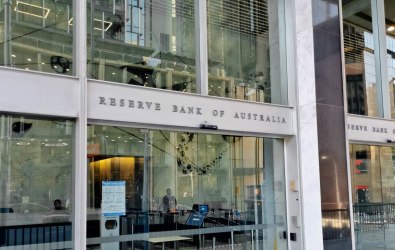Commonwealth Bank of Australia (CBA), Westpac, National Australia Bank (NAB) and ANZ are sharply lower since July, with investors fretting about slower credit growth, higher bad debts and increasing global banking risks, as sovereign debt problems intensify and fears grow that Greece will default on its debt and damage European banks.
Morningstar believes the "market is wrong on bank stocks" and expects long-term value. Consensus analyst forecasts show the big four banks on single-digit forecast price-earnings multiples and dividend yields above 7 per cent - a valuation metric that appeals to some value investors.
Clime Asset Management is one such investor. It too has a favourable long-term view on bank stocks and believes current share prices do not reflect the banking sector's fundamentals.
The firm's MyClime research and share valuation service shows each big four bank trading well below its forecast intrinsic value after recent heavy price falls. Clime's forecast intrinsic value for ANZ shares in 2011 is $27.93, CBA is $57.13, NAB is $29.56 and Westpac is $26.69.
In an insightful report, Clime Asset Management analyst George Whitehouse analysed the big four bank stocks on five measures: return on equity, return on assets, cost-to-income ratio, net interest margin, and asset growth and impaired assets.
Whitehouse examined data back to 1995 to present a long-term analysis on how the big four compare on these metrics, and plotted each bank's share price against its forecast intrinsic value over the next two forecast periods.
The analysis found banks had mixed profitability on return on equity (ROE) over 15 years, with all but NAB exceeding Clime's preferred 20 per cent average ROE. Whitehouse says: "CBA is forecast to have the best ROE for the next few years, partly as a result of buying Bankwest at a great price at the depths of the GFC (global financial crisis), although they did have a few unexpected surprises in the long book."
Clime likes banks to achieve a return on assets (ROA) of about 1 per cent. Again, NAB performed poorly against Clime's benchmark over a long period and relative to its peers. Westpac had a better long-term ROA record and has outperformed other banks on this metric recently.
Whitehouse found each bank successfully reduced costs as a percentage of income over 15 years, with ANZ a standout.
CBA might have more scope to reduce its cost-to-income ratio as its Core Banking Modernisation project progresses, with the bank reconfirming a 35 per cent cost-to-income target for its retail division by 2013 and expected cost savings of $300 million a year after the four-year project, now past halfway, concludes.
The net interest margin for the big four was less compelling, with margins under increasing pressure for many years because of greater competition.
Whitehouse says: "More recently banks have been under pressure from higher costs of wholesale and retail funding, especially for the smaller banks with lower credit ratings."
ANZ and NAB scored best on this metric, with Whitehouse predicting net interest margins to stay flat in the near term.
On the metric of bank asset growth, slower bank credit growth as consumers save more and spend less will hamper short-term bank performance.
"Consumers and businesses will regain their appetite for credit, however, this may be a few years off," Whitehouse says.
Higher unemployment could lead to a rise in bank asset impairment levels and bad debts, but sound local gross domestic product and marginally lower unemployment into 2012 should help banks with bad debt write-offs.
The author's family owns CBA, NAB and ANZ shares.





